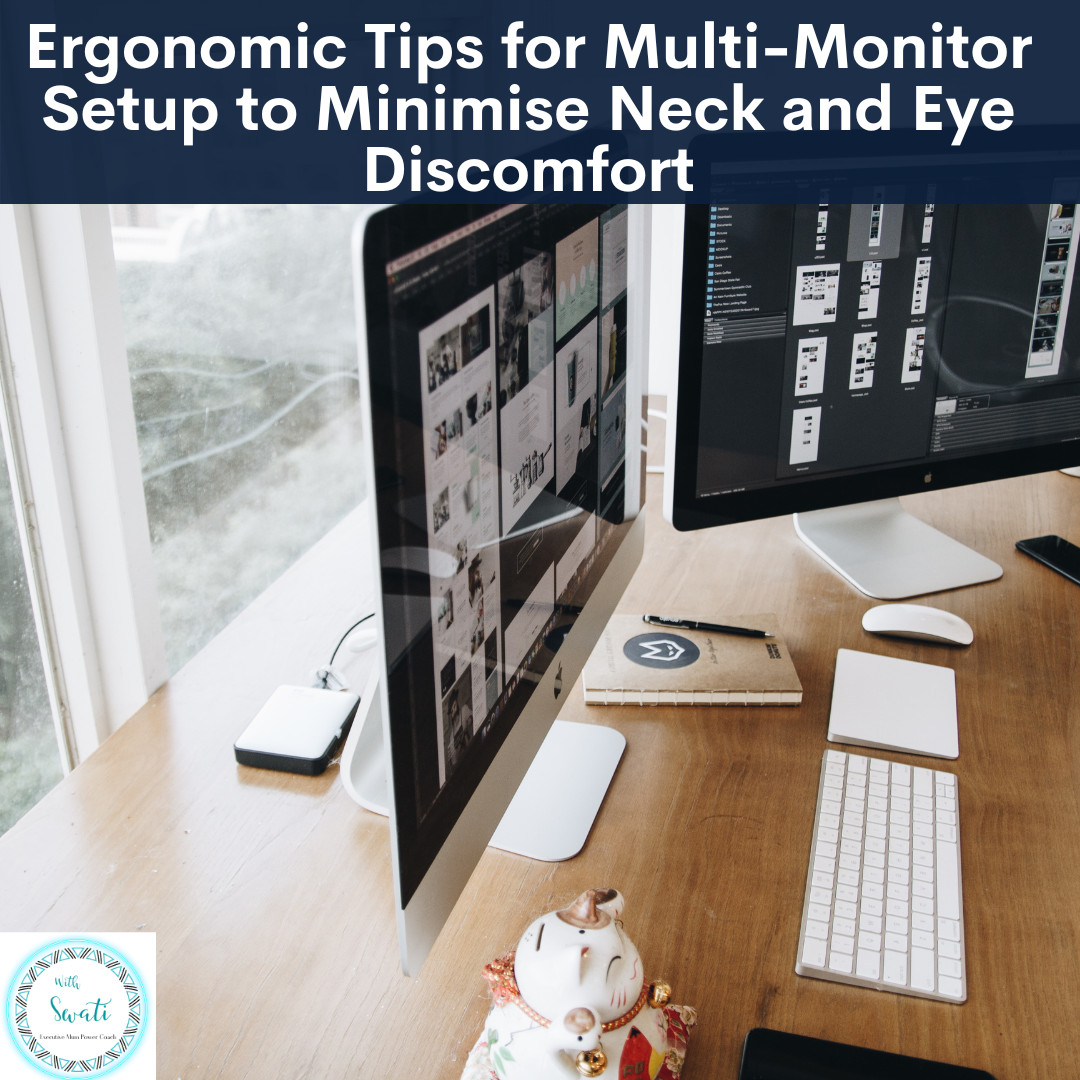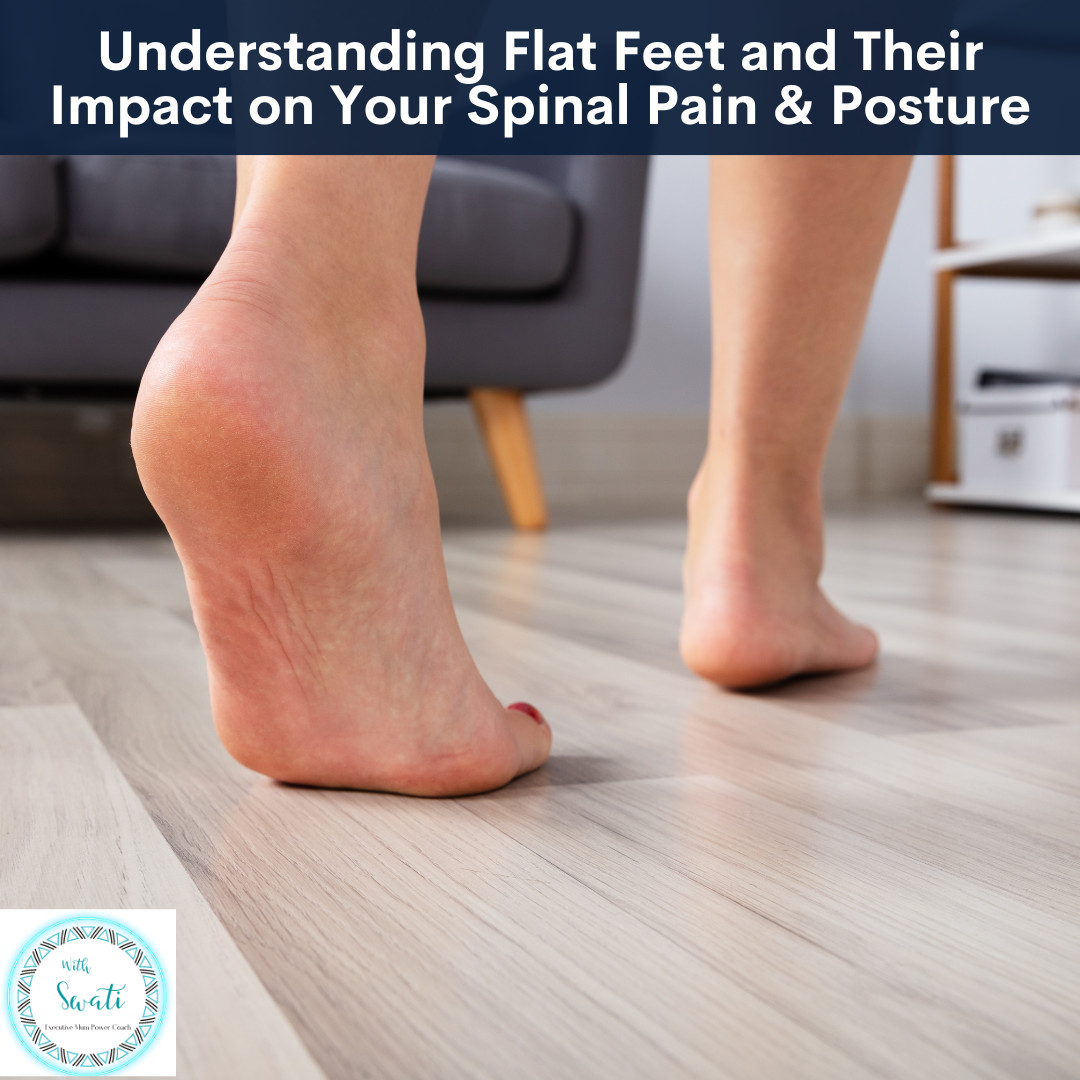
In today's digital age, multi-monitor setups are becoming increasingly common, especially for executive mums who multitask between various responsibilities. While such setups can significantly enhance productivity, they can also lead to increased neck and eye discomfort if not configured correctly. In this blog, let’s discuss some essential ergonomic tips to help you minimize these discomforts and maintain your health while juggling your demanding roles.
Correct Monitor Placement is crucial. Monitor should be at least an arm’s length away, with the top of the screens 5 to 10 degree below eye level (see picture below). This positioning helps places your cervical spine in a neutral position and prevents straining your neck. If using a laptop use a separate keyboard or a separate monitor.

When using two monitors, they should ideally form a gentle V shape, which helps minimize head rotation and keeps everything within a comfortable viewing range. Also, identify your primary monitor: the one you will use most often and position it directly in front of you. The secondary monitor should be off to the side where you glance occasionally. This setup reduces the need for constant head turning, which can decrease strain on your neck muscles over time.
To prevent eye discomfort, headaches and other visual discomforts, ensure that the brightness and contrast settings on your monitors are adjusted so that they are comfortable for your eyes. Try to reduce blue light exposure, especially later in the day, to help maintain your natural sleep rhythms. In addition to this follow the 20-20-20 rule: every 20 minutes, look at something 20 feet away for at least 20 seconds. This exercise helps reset your focus and reduces the risk of eye strain. Additionally, incorporate simple desk based exercises including neck stretches during these breaks to relieve any built-up tension.
Remember that your chair plays a significant role in maintaining a good sitting posture. Choose an ergonomic chair that supports the natural curve of your spine, with adjustable seat height, backrest, and armrests to promote a seated position that keeps your feet flat on the floor, knees at a right angle, and arms at desk level. This alignment helps prevent both back pain and neck stiffness.
Moving on to your desk, place your keyboard and mouse within easy reach on your desk. They should be situated in such a way that your elbows are close to your body and your arms are at or below a 90-degree angle. This prevents overreaching, which can lead to shoulder, neck and wrist discomfort.
By integrating these ergonomic tips into your multi-monitor setup, you can create a work environment that enhances efficiency without compromising your physical well-being. This balanced approach is crucial for maintaining productivity and ensuring long-term health.
HERE is a free guide for you to "Avoid neck pain while working from home."It has simple tips and modifications that can help avoid neck pain while working from your home or your office.
If you like this blog and want to be notified about new blogs as soon as they are published, subscribe to my mailing list below.
I would love to see you around the internet! For other places you can explore more about me: https://withswati.com/page/link
Note: This page contains affiliate links which will bless me, at no additional cost to you and I will be able to help more people with spinal and joint pain.
















0 Comments